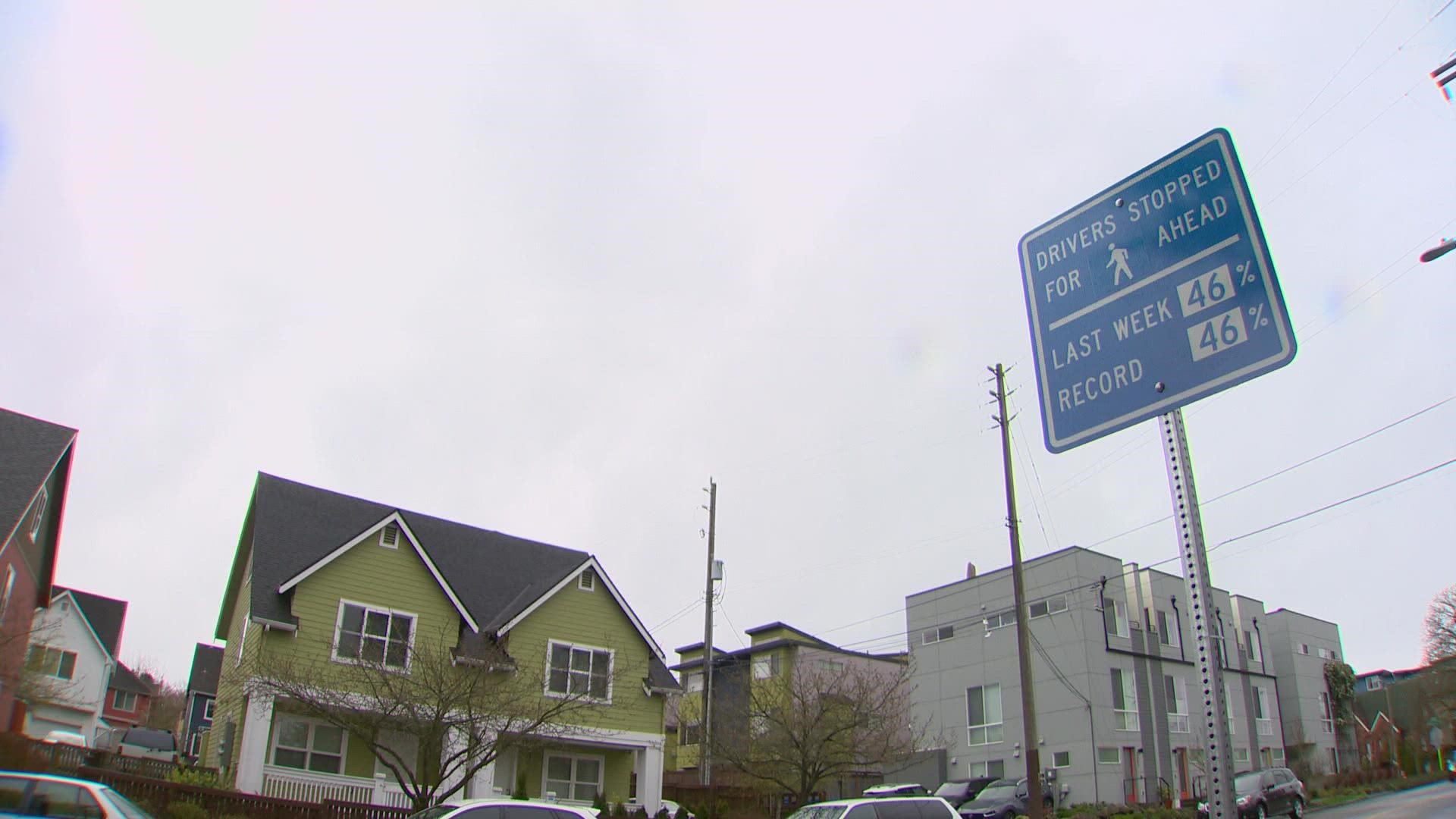SEATTLE — Seattle began rolling out what are being called "driver report cards" at busy intersections throughout the city.
The signs will be installed at 13 intersections with marked and unmarked crosswalks. They are part of a $350,000 public education and awareness campaign being rolled out over the next two years.
The first two signs were installed at intersections in the High Point neighborhood of West Seattle at 34th Avenue SW and SW Morgan Street and Sylvan Way SW and SW Sylvan Heights Drive. While observing the behavior of drivers of 25 vehicles recently, the Seattle Department of Transportation (SDOT) reports just under half of the drivers stopped at a painted crosswalk and no drivers stopped at an unpainted crosswalk.
Washington state law specifies drivers must stop for pedestrians at nearly all intersections, whether there is a painted crosswalk or not, unless a sign states people are not allowed to cross the street.
An informal survey of 1,000 people in Seattle done by SDOT showed 70% of drivers said they stop for pedestrians at painted crosswalks. During observations, however, fewer than 20% of drivers stopped for pedestrians, according to SDOT. When it comes to unmarked crosswalks, fewer than 40% of respondents said they stop for pedestrians.
"Clearly, we have significant work to do to make sure everyone knows and obeys the law," SDOT wrote on its blog.
The report card signs are based on a project done in St. Paul, Minnesota. The percentage of drivers who stop for pedestrians will be tallied and posted on the signs, along with the record percentage.
The signs will be installed in Rainier Beach, followed by other neighborhoods around the city. All initial locations will be within the attendance area of schools with high proportions of students receiving free or reduced-price lunch and high proportions of students of color, according to SDOT.
SDOT will also compare the percentage of drivers who stop for white pedestrians to the percentages of those who stop for people of color. Research, according to SDOT, shows white pedestrians spend less time waiting to cross at crosswalks.
"This is based on our objective of centering safety investments in communities who have been most harmed through public disinvestment," SDOT wrote.
The signs will be posted for about six weeks. The program will then be assessed and the data will be used to help design the larger public education campaign.

